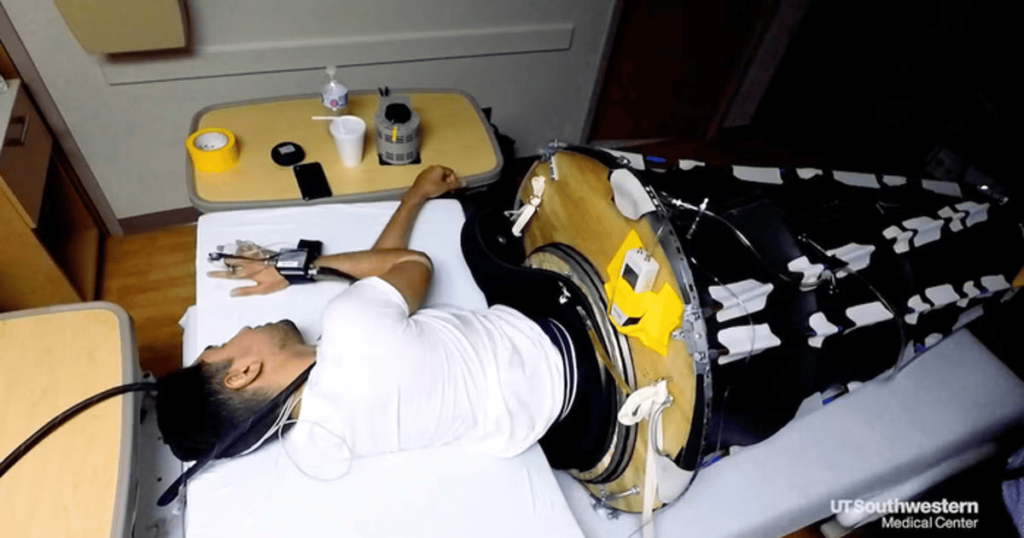
NASA is facing a dilemma over the fate of astronauts Butch Wilmore and Suni Williams, who may be forced to extend their stay on the International Space Station (ISS) due to technical problems with Boeing’s Starliner capsule. Originally, the plan was for the test pilots to return to Earth after a week, but now, thruster failures and helium leaks have called into question the safety of the ship for the return trip.
Given this situation, NASA is considering the possibility of Wilmore and Williams returning on the next SpaceX flight, which would extend their stay on the station until February next year. In the meantime, the Starliner could be sent back unmanned, avoiding any additional risk to the astronauts.
Uncomfortable Situation Aboard the ISS
As for the day-to-day life of astronauts, the situation aboard the ISS is, to say the least, uncomfortable. With nine astronauts in a space designed for six or seven, Wilmore and Williams have had to adjust to sleeping in less than ideal conditions: As Time reported, Williams shares a small sleep chamber with another astronaut, while Wilmore sleeps in a sleeping bag in the Japanese Space Agency’s Kibo module.
In addition, their extended stay has forced the astronauts to stretch their clothing rations, a problem that was only recently remedied when a resupply vehicle delivered clean clothes to them. As for their duties, with the main work on the Starliner now complete, they have been assisting in scientific experiments and routine repairs, such as fixing a urine processing pump.
Despite these challenges, the astronauts have remained positive. "We’re having a great time here on the ISS," Williams said in July, though uncertainty about their return to Earth is evident.

NASA weighing data, considering options
NASA officials said they are analyzing more data before making a decision late next week or early next week. These thrusters are crucial to keeping the capsule in the right position when it comes time to descend from orbit.
"We have time available before we bring Starliner home and we want to use that time wisely," said Ken Bowersox, NASA’s space operations mission chief. NASA safety chief Russ DeLoach added: "We don’t have enough knowledge and data to make a kind of simple, black-and-white calculation."
DeLoach said the space agency wants to accommodate all opinions, unlike in NASA’s two shuttle tragedies, Challenger and Columbia, when dissenting opinions were ignored.
"That can mean, at times, that we don’t move very quickly because we’re getting it all out, and I think you can see that at play a little bit here," he said.
The move to SpaceX would require moving two of the four astronauts assigned to the next shuttle flight, currently scheduled for late September. Wilmore and Williams would fill the empty seats on SpaceX’s Dragon capsule after that half-year mission ends.
Another complication
The space station has only two parking spots for American capsules, so Boeing’s capsule would have to leave before SpaceX’s Dragon arrives to free up a spot.
Boeing maintains that Starliner could bring astronauts home safely. Earlier this month, the company published a list of tests conducted with the boosters in space and on the ground since liftoff.
NASA would like to keep SpaceX’s current crew there until replacements arrive, barring an emergency. Those four crew members were due to return to Earth this month, but a seventh month has been added to their mission because of uncertainty about Starliner, keeping them there until the end of September. Most space station stays last six months, though some have lasted a full year.

"That’s their job as astronauts"
Wilmore and Williams are retired Navy captains who spent months aboard the space station years ago. They joined the station as soon as they arrived, helping with experiments and repairs.
"They’ll do what we ask of them. That’s their job as astronauts," said NASA chief astronaut Joe Acaba. "This mission is a test flight, and as Butch and Suni expressed before launch, they knew this mission might not be perfect," he added.
Eager for competing services and backup options, NASA contracted with SpaceX and Boeing to transport astronauts to and from the space station after the shuttles retired in 2011.
SpaceX’s first astronaut flight was in 2020. Boeing suffered so many problems on its initial uncrewed test flight in 2019 that it was ordered to do it again. More problems followed, costing the company more than $1 billion to fix before it finally got astronauts flying.